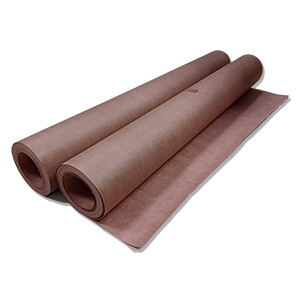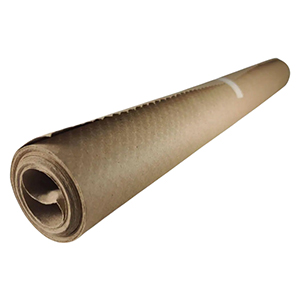More Information on Weed Prevention and Control
Weed Management and Control Information
Weeds are the opportunists of the plant world. There are two kinds: annual and perennial. Annual weeds usually occur where annual plants are grown, in response to the methods used to grow the plants you want. Everyone has had experience with weeds in the flowerbed or vegetable garden. Annual weeds grow rapidly and produce a lot of seeds when allowed to mature. Perennial weeds are more difficult to eradicate because they grow slowly and have taproots or matted roots that allow them to keep coming back year after year. Common weeds like crabgrass or dandelion have these characteristics.
Where do weeds come from? Weed seeds can travel histaminically (on the wind) or they can hitch are ride on people or animals. Occasionally seeds are imported in the materials we bring into the garden – for instance in seedlings or potting soil. Here are some things you can do to avoid and control invasive weeds.
Lawn and Turf Weed PreventionInvasion of weeds into lawns or turf is usually a sign of a fundamental weakness in the grass due to factors such as insects, diseases, plant parasitic nematodes, inadequate watering, improper mowing, poor fertilization or incorrect pH. Lawn and Turf Weed Control
- Planning for a healthy lawn is the best prevention. Use Root Maximizer, Kelp Meal and EM-1.
- Use pre-emergent corn gluten meal herbicides early in the season before weeds emerge in the spring.
- Use post-emergent herbicides like Avenger Organic Weed Killer with proper shielding, since it is non-selective.
- Hand-weed the tough perennials like dandelions or crabgrass. Make sure and get all the root(s) so the weed will not return.
- Be sure to pull or spray your weeds before they make seed and spread to other areas.
- Depending on the flower/seed height of the weed, keeping grass cut short can successfully keep weeds from seeding.
Gardens/Annuals Weed Prevention
Invasion of weeds into gardens or other annual flowerbeds happens when bare earth, moist conditions, and adequate sunlight and rich fertilization just beg the weed seeds to germinate. Prevent this from happening with the following good garden practices:
- Fertilize around plants rather than the entire garden area. This allows less nitrogen or ammonia from organic fertilizers in the walkway areas, and weed seeds will not be as likely to germinate.
- Mulch the area to keep germination low. Use ARBICO compost.
- Plant your crops or flowers closer together; their height and shadows will reduce sunlight for weed seed germination.
- Rotate your annual flowers and your garden crops. This will discourage the germination of seeds that have gone dormant.
- Do not till deeper than a few inches. Weed seeds will germinate if they have been tilled in deeply, go dormant, and then are re-tilled to the surface.
- In your garden space, if you do not grow a winter crop, consider sowing our Good Bug Blend in the fall. Plan to till it under just as you plant your spring crop. Several plants in it have a natural seed-deterrent effect for the next spring. It should last until your garden veggies are big enough to shade out weed seed germination.
- Hand-weed annuals while they are small; do not allow them to make seeds.
- If hand-weeding is not possible, apply post-emergent herbicides like Avenger Organic Weed Killer with proper shielding, since it is non-selective.
- Hand-weed the tough perennials like dandelions or crabgrass. Make sure to get all the root(s) so the weed(s) will not return.
- Keep the perennials properly watered and the soil at the proper pH.
- Fertilize around plants rather than the entire landscape area.
- Mulch the area to keep germination low. Use ARBICO compost.
- Good weed control in contiguous grass areas will eliminate seed migration from these areas.
- Hand-weed annuals while they are small; do not allow them to make seeds.
- If hand-weeding is not possible, apply post-emergent herbicides like Avenger Organic Weed Killer with proper shielding, since it is non-selective.
- Hand-weed the tough perennials like dandelions or crabgrass. Make sure and get all the root(s) so the weed(s) will not return.
- Collect data from each year to evaluate what has happened and project what you may need to do in the future.
- Rotate crops to disrupt weed germination and growth cycles.
- Use cover crops during the winter. Their properties can suppress weeds the next spring. Always select the cover crop based on the next crop that will be planted in the spring.
- Fertilize in bands rather than the whole field. Nitrogen and ammonia can increase weed seed germination.
- Choose planting patterns that diminish weed growth. This includes density of planting, row width and selecting fast-growing crops. Together these work to reduce the amount of light for weed germination.
- Do not till deeper than a few inches. Weed seeds will germinate if they have been tilled in deeply, go dormant, and then are re-tilled to the surface.
- Choose a type of harrowing that will work with your crop to uproot small weeds that have germinated.
- Apply post-emergent herbicides like Avenger Organic Weed Killer with proper shielding, since it is non-selective.
- After harvesting hay or cereal crops, mow the stubble in August to reduce weed growth.
- Plant a cover crop for the winter. Consider sowing our Good Bug Blend in the fall. Plan to till it under just as you plant your spring crop. Several plants in it have a natural seed-deterrent effect for the next spring.
-
$61.00–$219.60
-
-
$13.50–$3,750.00
-
-
-
$98.00–$1,818.00
-
-
$135.00–$11,500.00
-
$405.00–$3,861.00
-
$19.99–$1,870.00
-
$37.99–$54.99
-
$3.99–$9.99
-
-
$35.00–$4,400.00
-
$10.99


















